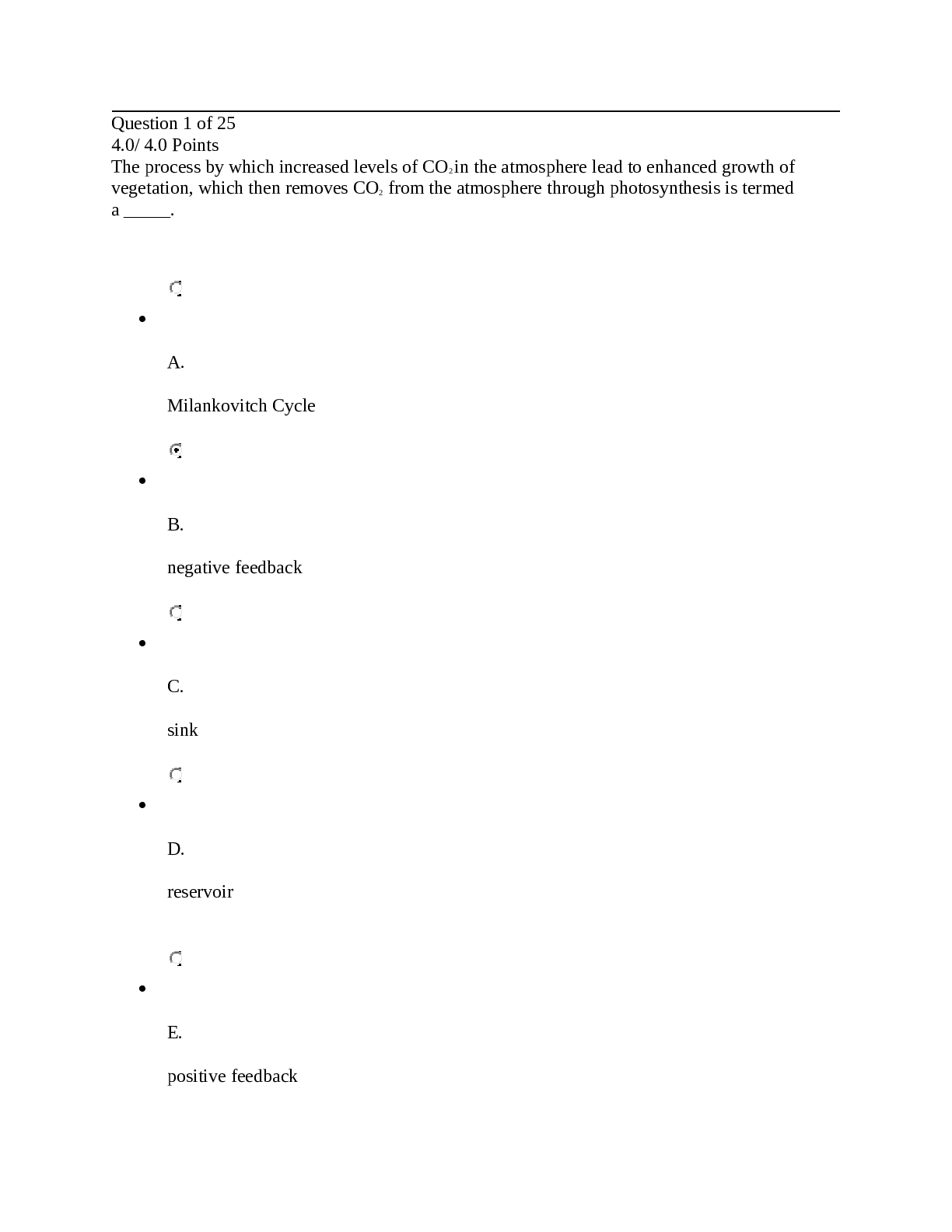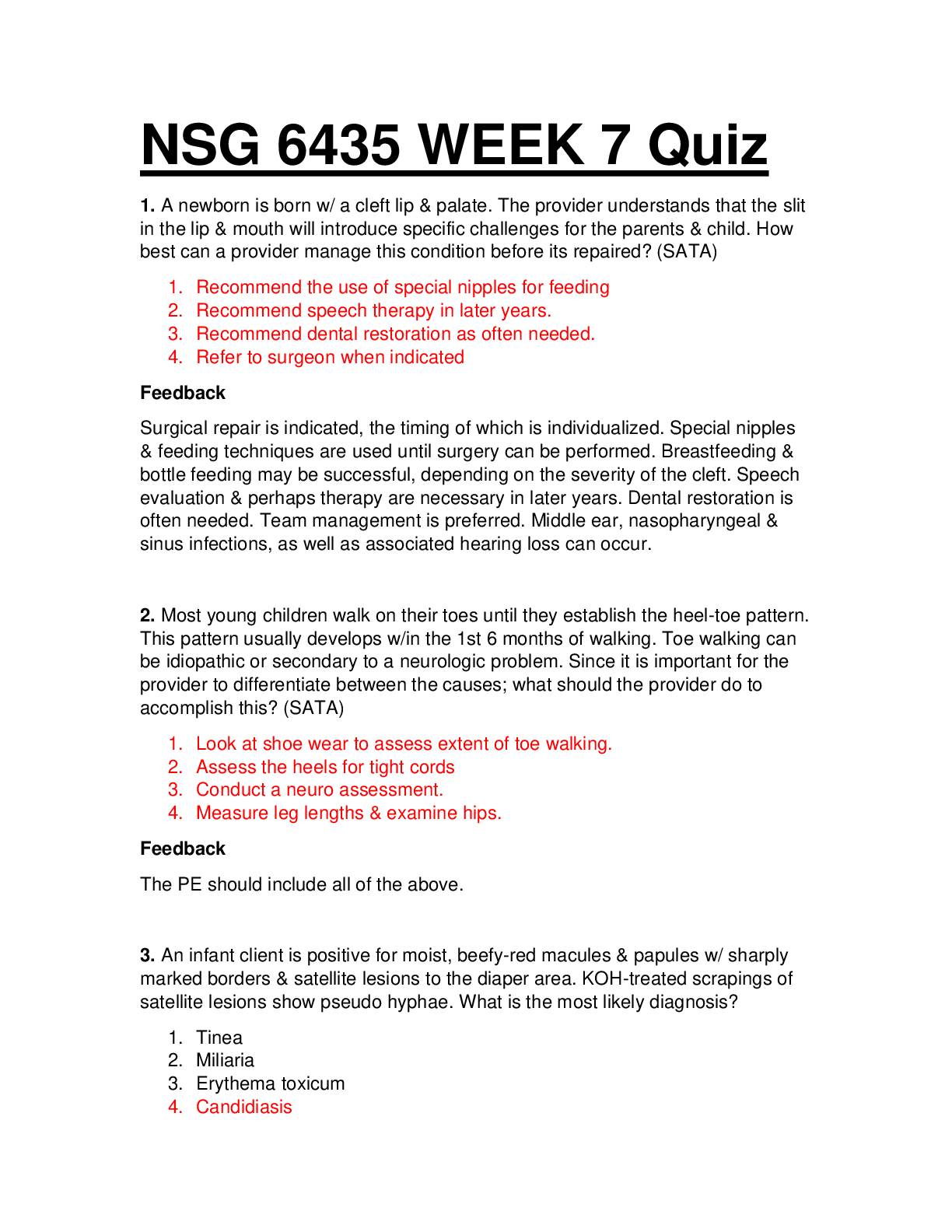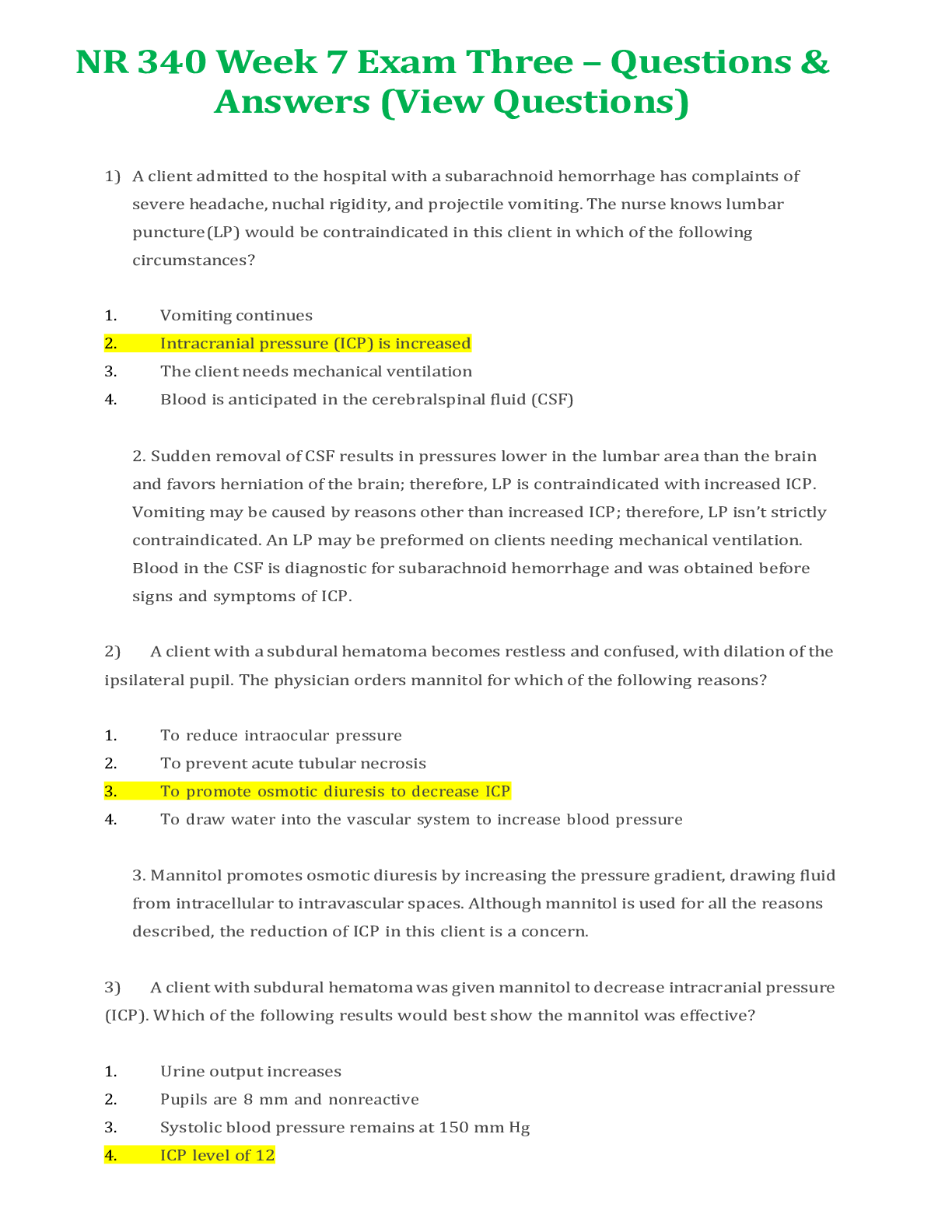*NURSING > EXAM > Portage Learning; MED Nursing Fundamentals Week 7 Exam and Summary/Definition in this one Document ( (All)
Portage Learning; MED Nursing Fundamentals Week 7 Exam and Summary/Definition in this one Document (Latest)
Document Content and Description Below
Portage Learning; MED Nursing Fundamentals Week 7 Exam and Summary/Definition in this one Document (Latest) A nurse enters the examination room of the emergency clinic and meets a 29-year-old patie... nt who missed her last two follow-up appointments. The nurse notes from the medical record that the patient has high blood pressure that the doctor has been trying to help her manage. The patient just spoke with her doctor who left the room frustrated because the patient has not been taking her medication as prescribed. The patient confronts the nurse, saying, "I'm tired of being treated this way; no one cares. I need to find another doctor!" Using the C-LARA mnemonic, match the nurse's response to the correct letter of the mnemonic. 1. C ____ 2. L ____ 3. A ____ 4. R ____ 5. A ____ a. The nurse acknowledges that it is absolutely reasonable for patients to expect that their health care providers care about their situations and that it is disappointing when they have experiences that make them feel like they do not. b. The nurse uses a relaxation technique before responding to the patient's concerns. Calm yourself. Take a deep breath. Check your pulse. c. The nurse says, "I want to help you. I can do that better if you tell me what's making it difficult for you to come to your appointments and take your medicine each day." d. The nurse maintains eye contact and allows the patient to discuss her perspective while remaining attentively quiet. e. The nurse explains, "One thing I want you to understand is that your blood pressure medicine will only work if you take the same amount each day. Your follow-up appointments are important so we can get this blood pressure under control. Let me get a social worker who can help you figure out these transportation issues or see if he can find a doctor closer to your house." Which of the following are considered social determinants of health? (Select all that apply.) 1. Lack of primary health care providers in a zip code 2. Poor-quality public school education that prevents a person from developing adequate reading skills 3. Lack of affordable health insurance 4. Employment opportunities that do not provide paid vacation or sick leave 5. The number of times a person exercises during a week 6. Neighborhood safety that prevents a person from walking around the block or socializing with neighbors outside of his or her home Which of the following changes can help create a more inclusive environment for lesbian, gay, bisexual, and transgender (LGBT) patients? (Select all that apply.) 1. Explicitly including sexual orientation and gender identity into nondiscrimination policies 2. Displaying art that reflects LGBT community 3. Modifying health care forms to provide opportunities for gender identity and sexual orientation disclosure 4. Not asking patients about their gender identity and sexual orientation to avoid making them uncomfortable 5. Ensuring access to unisex or single-stall bathrooms Which of the following are examples of problems with the health care system that contribute to health disparities? (Select all that apply.) 1. A health care provider assumes that the patient missed two appointments because the patient does not care about his or her health and does not inquire about the reasons for missed visits. 2. The discharge nurse at a hospital uses Teach Back with a patient to ensure that she has communicated the discharge instructions clearly. 3. A community hospital lacks an adequate staff of social workers who are able to ensure patients' access to resources they need to take care of their health. 4. A hospital discharges a patient without ensuring that the patient has a primary care provider and has made a follow-up appointment. 5. A nurse uses a family member as an interpreter to explain the patient's medications. 6. The hospital conducts quality improvement without stratifying data by race, ethnicity, language, socioeconomic status, sexual orientation, and other axes of social group identities. Match each letter of the RESPECT mnemonic with a statement that describes the concept the letter represents. 1. R. ____ 2. E. ____ 3. S. ____ 4. P. ____ 5. E. ____ 6. C. ____ 7. T. ____ a. Ask about and try to understand barriers to care and adherence, and then offer resources to help the patient overcome them, involving family members if appropriate, and reassuring the patient that you are and will be available to help. b. Patients may have different reasons for not disclosing important information. Earn a patient's confidence through actions and attitude that demonstrate respect, compassion, and your interest in partnership. c. Work closely together with the patient by being flexible with regard to issues of control, negotiating roles when necessary, and stressing that you will be working together to mutually address medical problems. d. Provide explanations for the process and your action, checking often for understanding and using verbal clarification techniques such as Teach Back. e. Approach each encounter thinking about cultural competence and how you can demonstrate respect for the patient and his or her culture and beliefs. f. Approach the encounter with empathy, remembering that the patient has come to you for help. Seek out and understand the patient's rationale for his or her behaviors or illness, verbally acknowledging and legitimizing his or her feelings. g. Connect on a social level, seeking the patient's point of view; consciously attempt to suspend judgment; and avoid making assumptions. A patient is admitted through the emergency department (ED) after a serious car accident. The nurse assesses the patient and quickly learns that he speaks little English. Spanish is his primary language. The nurse speaks some Spanish. Which interventions would be appropriate at this time? (Select all that apply.) 1. The nurse requests a professional interpreter. 2. Since this is an emergent situation, the nurse will interpret and identify the patient's priority needs. 3. The nurse determines the interpreter's qualifications and makes sure that the interpreter can speak the patient's dialect. 4. The nurse uses short sentences to explain the treatments provided in the ED. 5. The nurse directs questions to the patient by looking at the patient instead of at the interpreter. A new nurse is caring for a hospitalized obese patient who is homeless. This is the first time the patient has been admitted to the hospital, and the patient is scheduled for surgery. Which of the following is a universal skill that will help the nurse work effectively with this patient? 1. The nurse shifts her focus to understanding the patient by asking her, "Describe for me the course of your illness." 2. The nurse tells the patient, "Your choices of foods and unwillingness to exercise are adding to your health problems." 3. The nurse asks the patient, "Tell me about the main problems you have had with your health from not having a home." 4. The nurse explains, "Because you have obesity, it is important to know the effects it has on wound healing because of reduced tissue perfusion." Summary/Definition(sample ) Placebos ----Dosage form that contains no pharmacologically active ingredients but may relieve pain through psychological effects Prostaglandins ----Potent hormonelike substances that act in exceedingly low doses on target organs. They can be used to treat asthma and gastric hyperacidity Pseudoaddiction ----Often a person with chronic pain who consults with numerous health care providers is labeled a drug seeker, when he or she is actually seeking adequate pain relief Regional Anesthesia ----Loss of sensation in an area of the body supplied by sensory nerve pathways Relaxation ----Act of being relaxed or less tense Transcutaneous Electrical Nerve Stimulation (TENS) ----Technique in which a battery- powered device blocks pain impulses from reaching the spinal cord by delivering weak electrical impulses directly to the surface of the skin Transduction ----Converts energy produced by these stimuli into electrical energy Transmission ----Once transduction is complete, transmission of the pain impulse begins. Cellular damage caused by thermal, mechanical, or chemical stimuli results in the release of excitatory neurotransmitters such as prostaglandins, bradykinin, substance P, and histamine [Show More]
Last updated: 1 year ago
Preview 1 out of 27 pages
Instant download
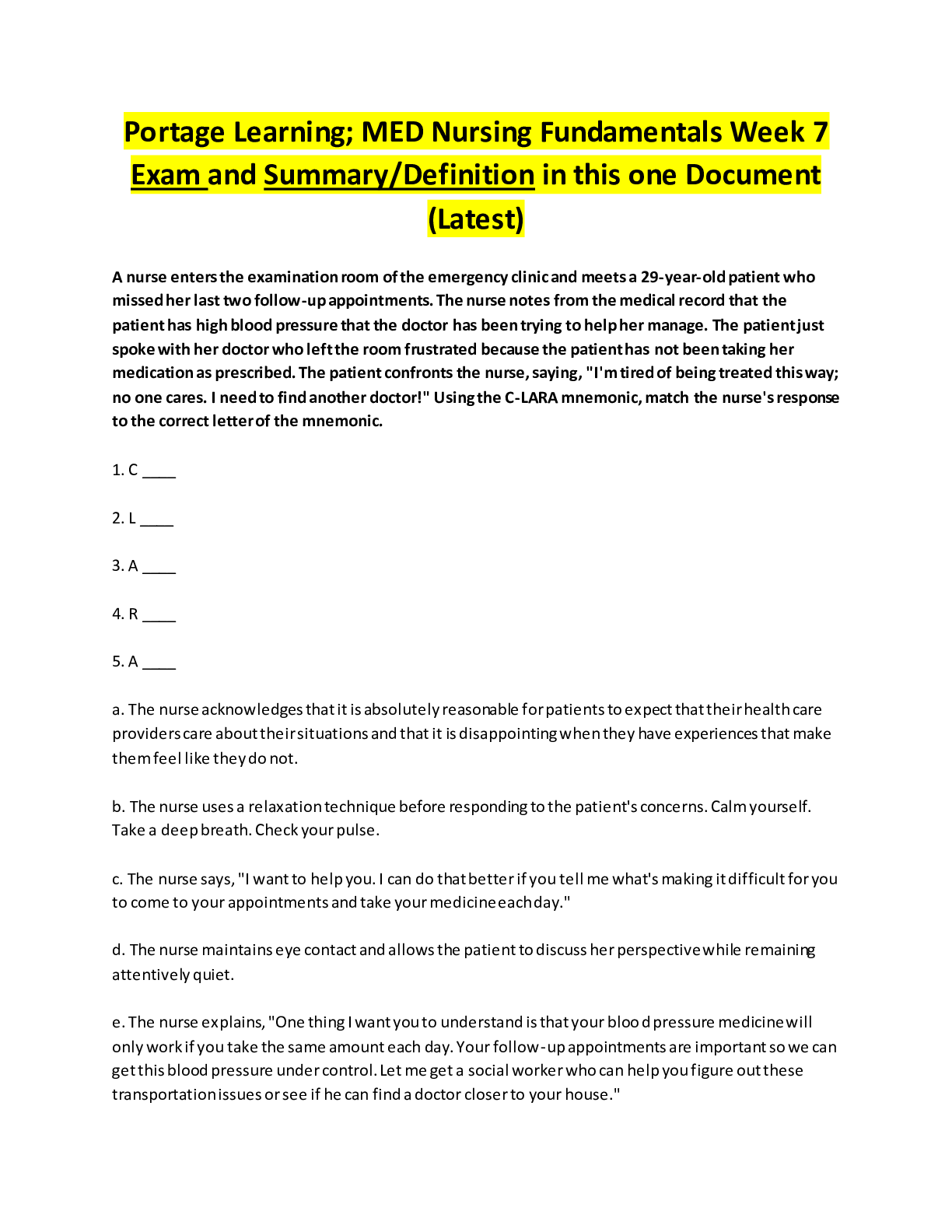
Buy this document to get the full access instantly
Instant Download Access after purchase
Add to cartInstant download
Reviews( 0 )
Document information
Connected school, study & course
About the document
Uploaded On
Jun 15, 2022
Number of pages
27
Written in
Additional information
This document has been written for:
Uploaded
Jun 15, 2022
Downloads
0
Views
45

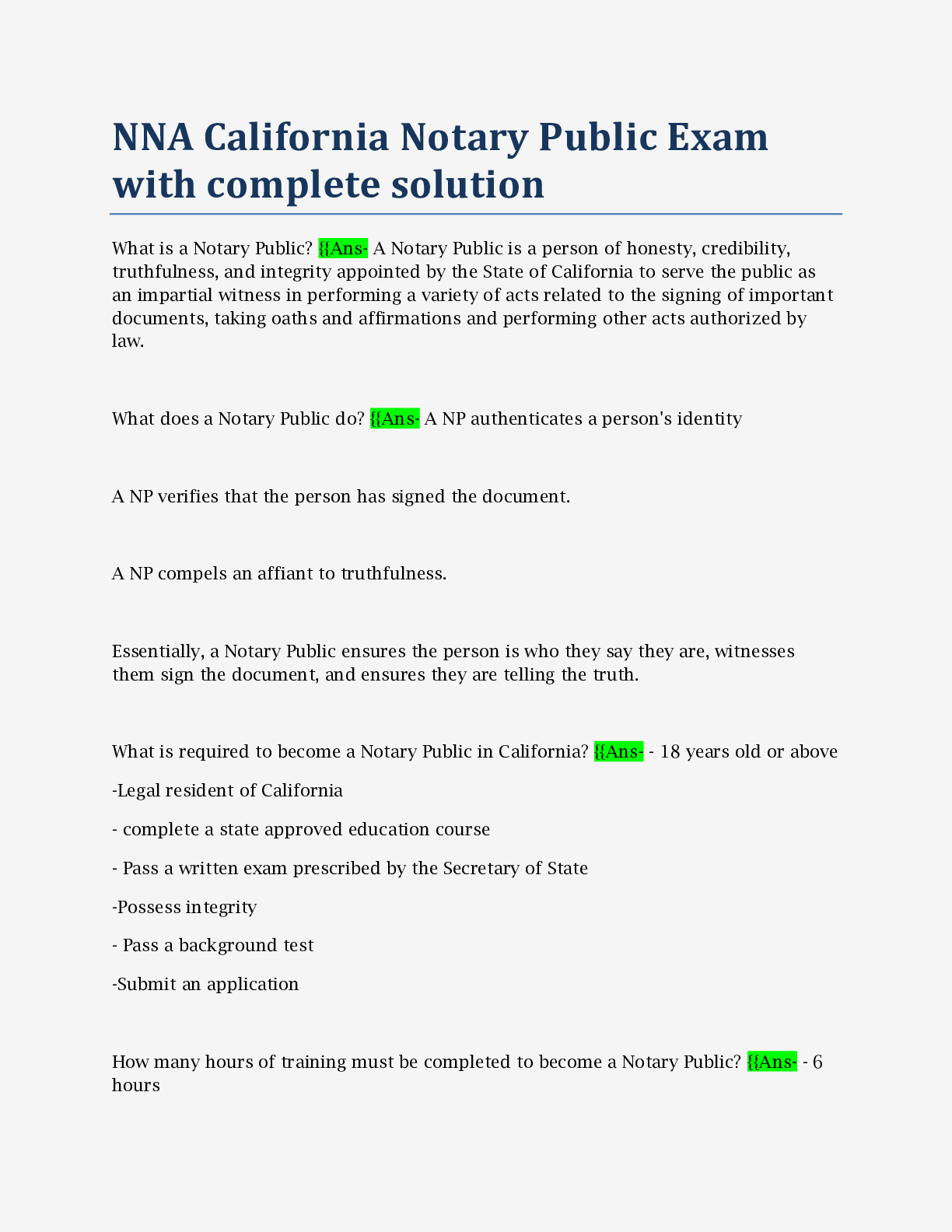
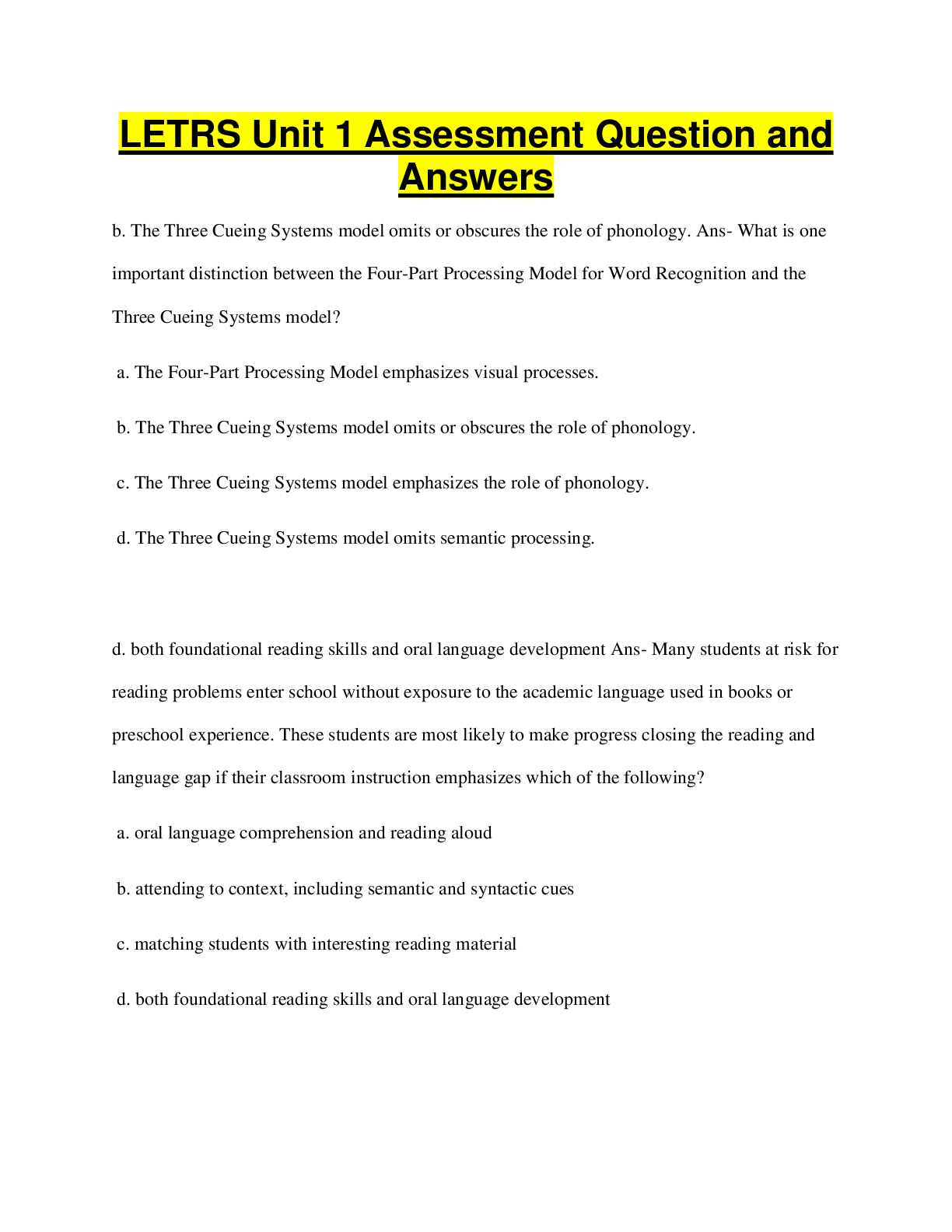
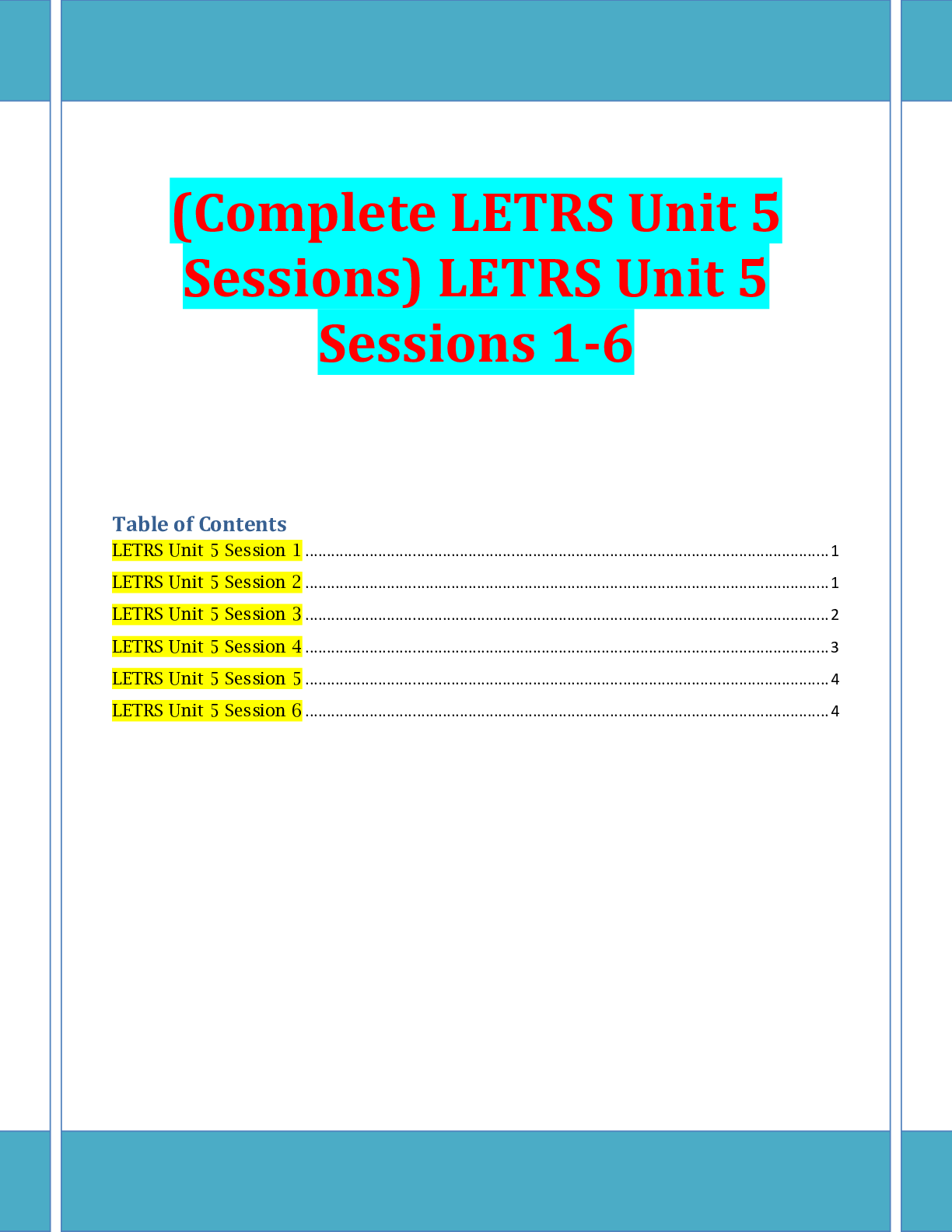
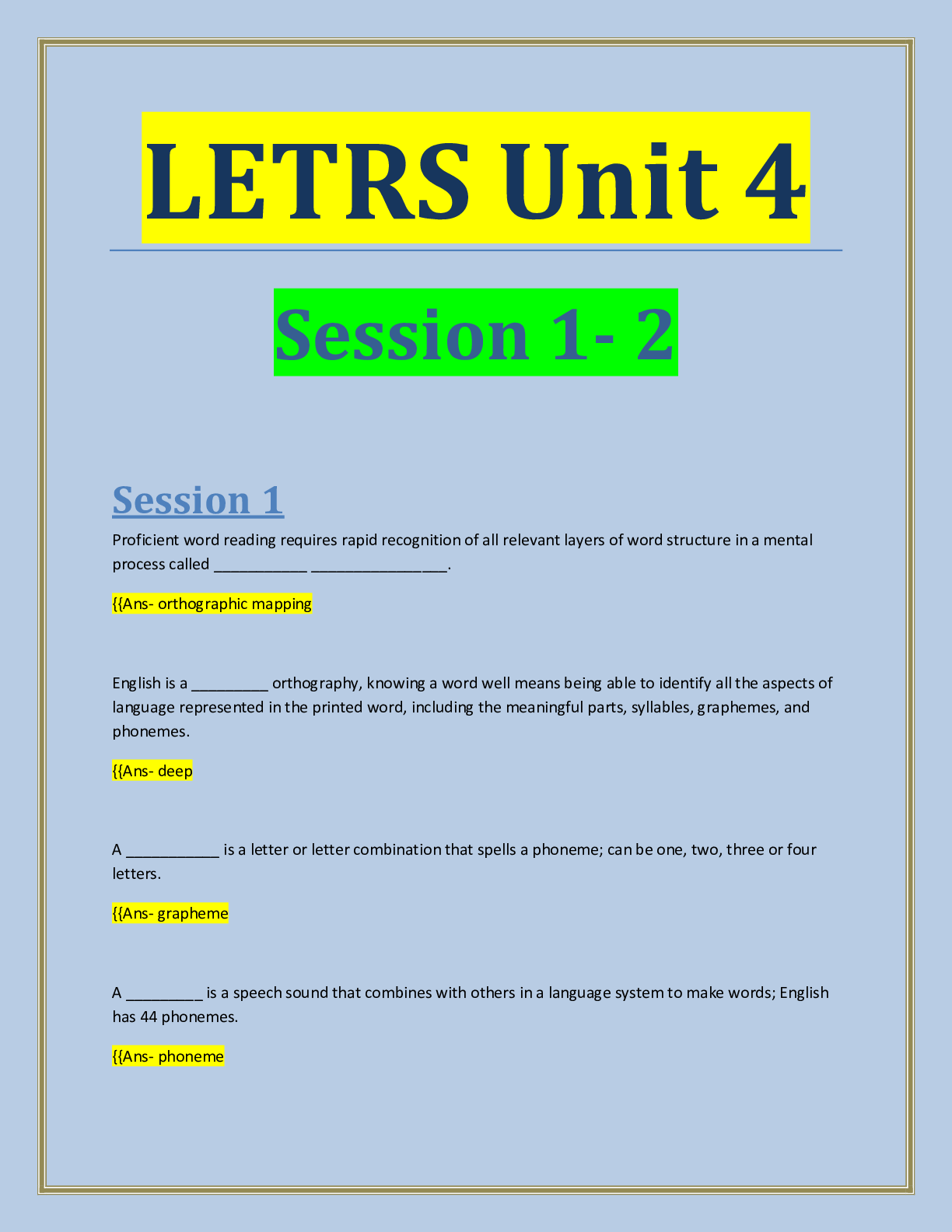
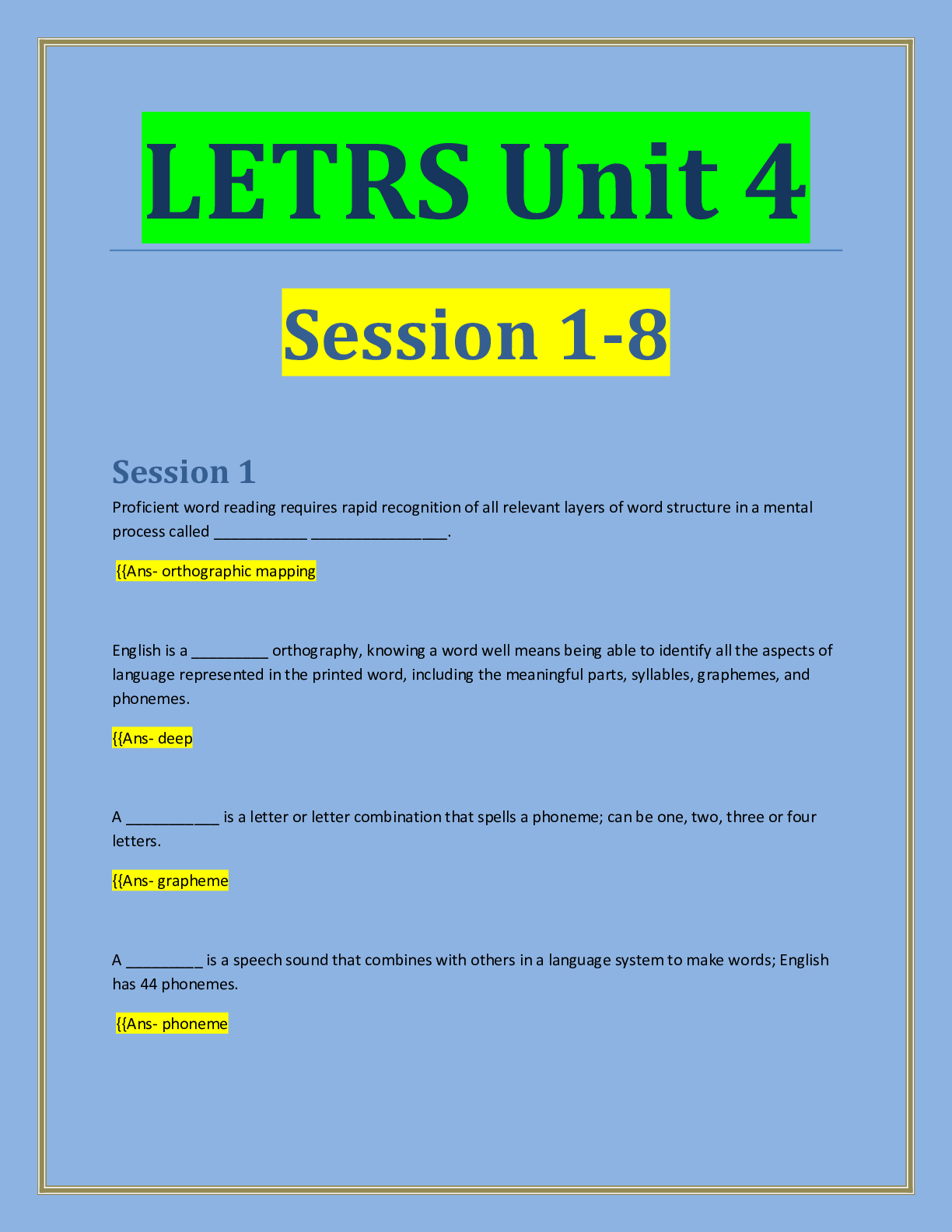

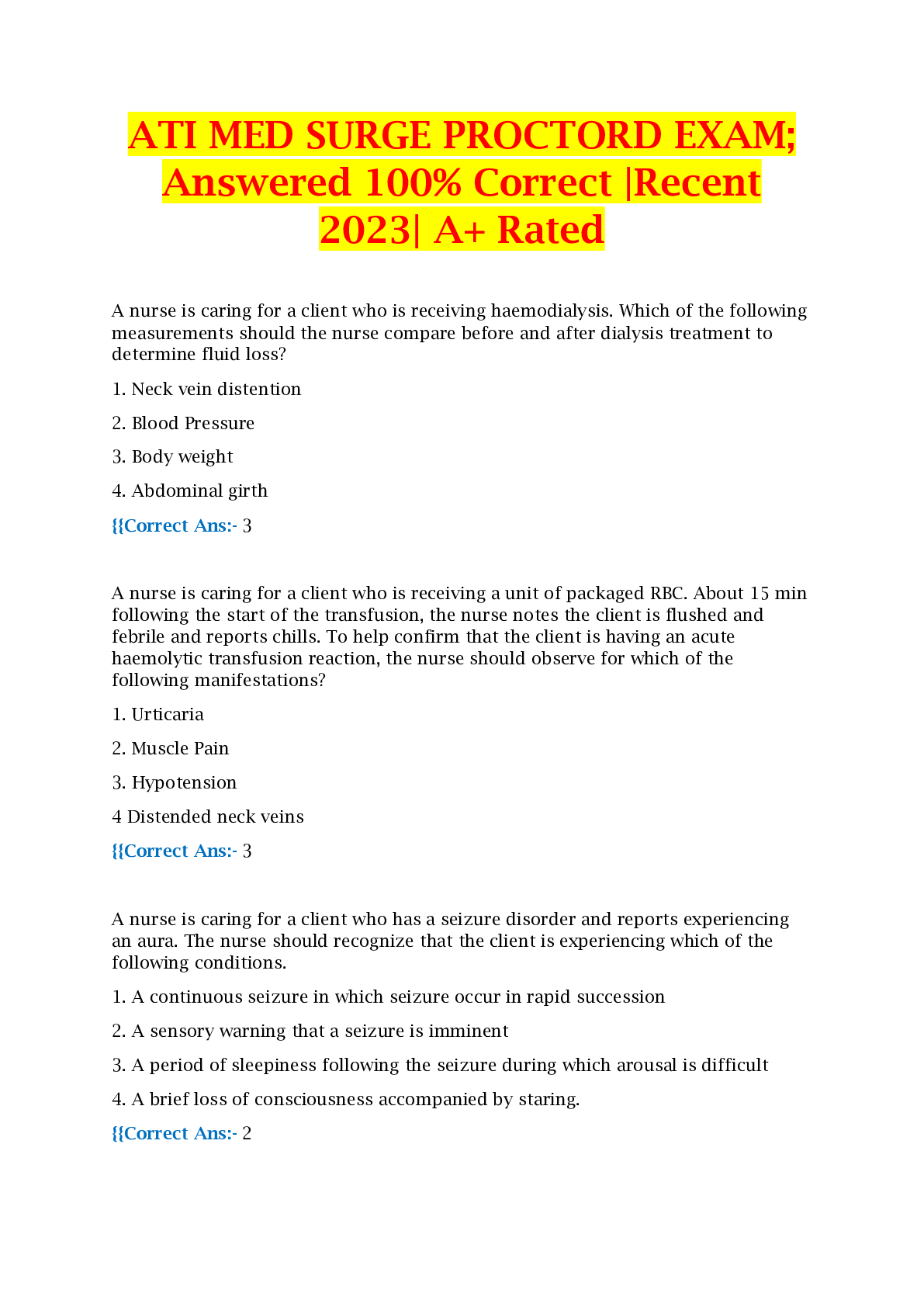


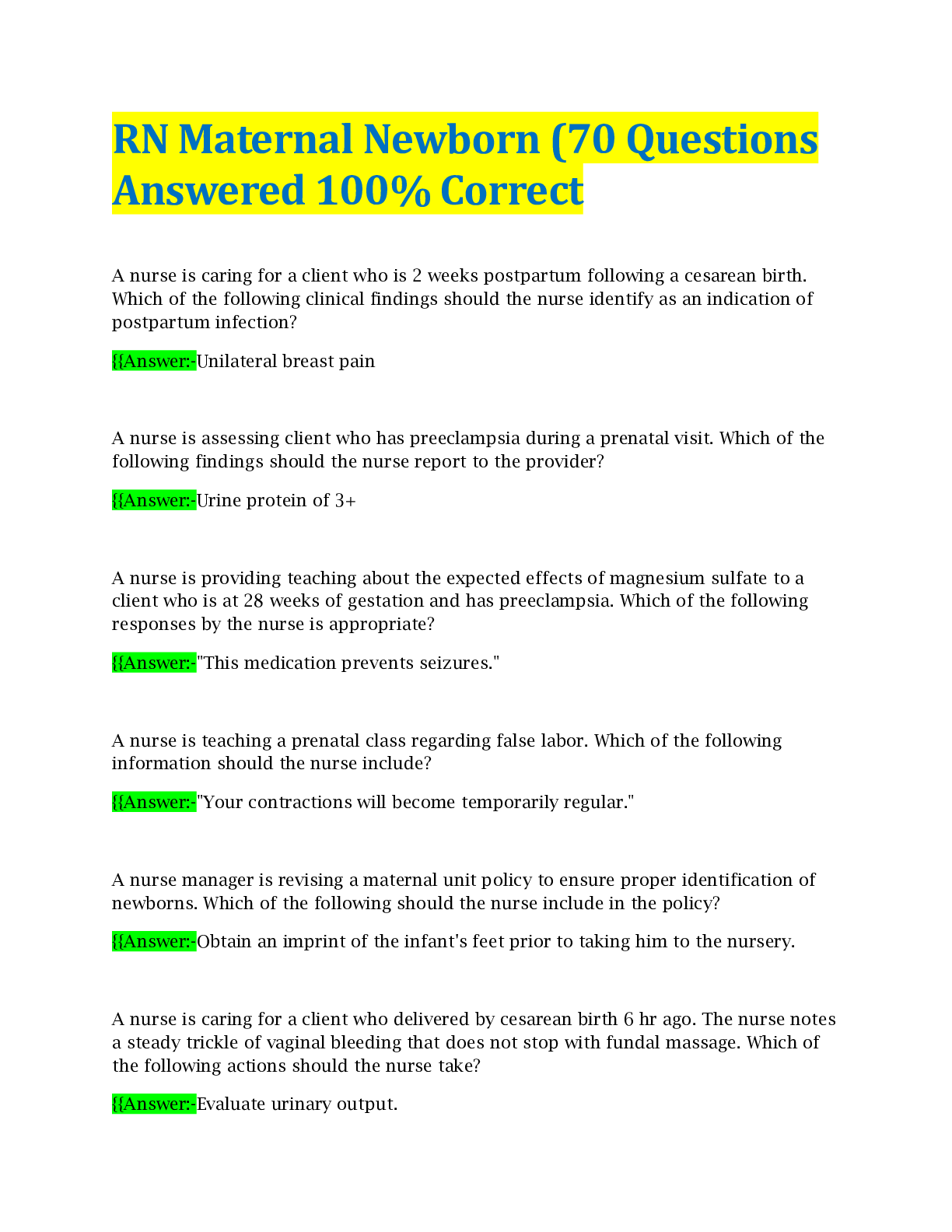
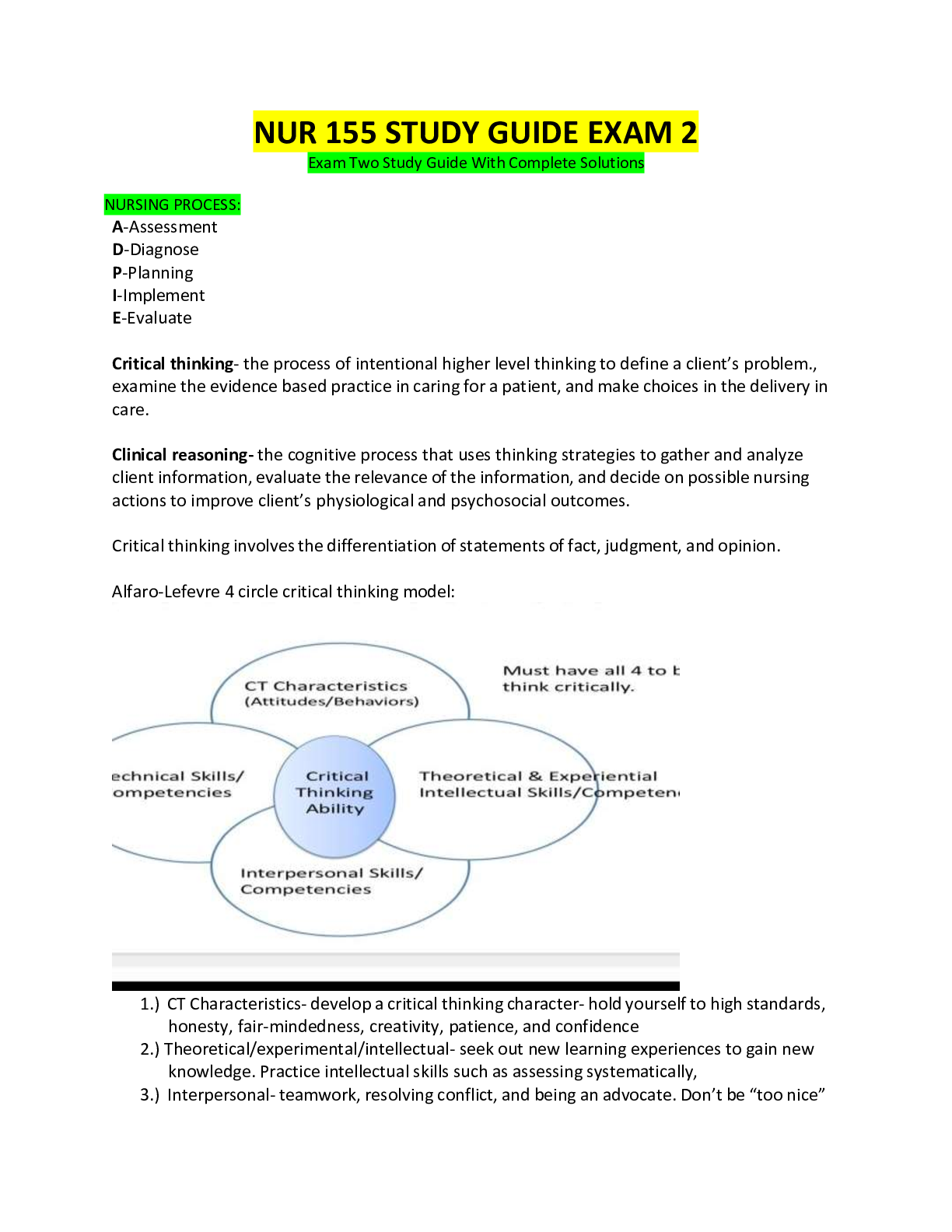
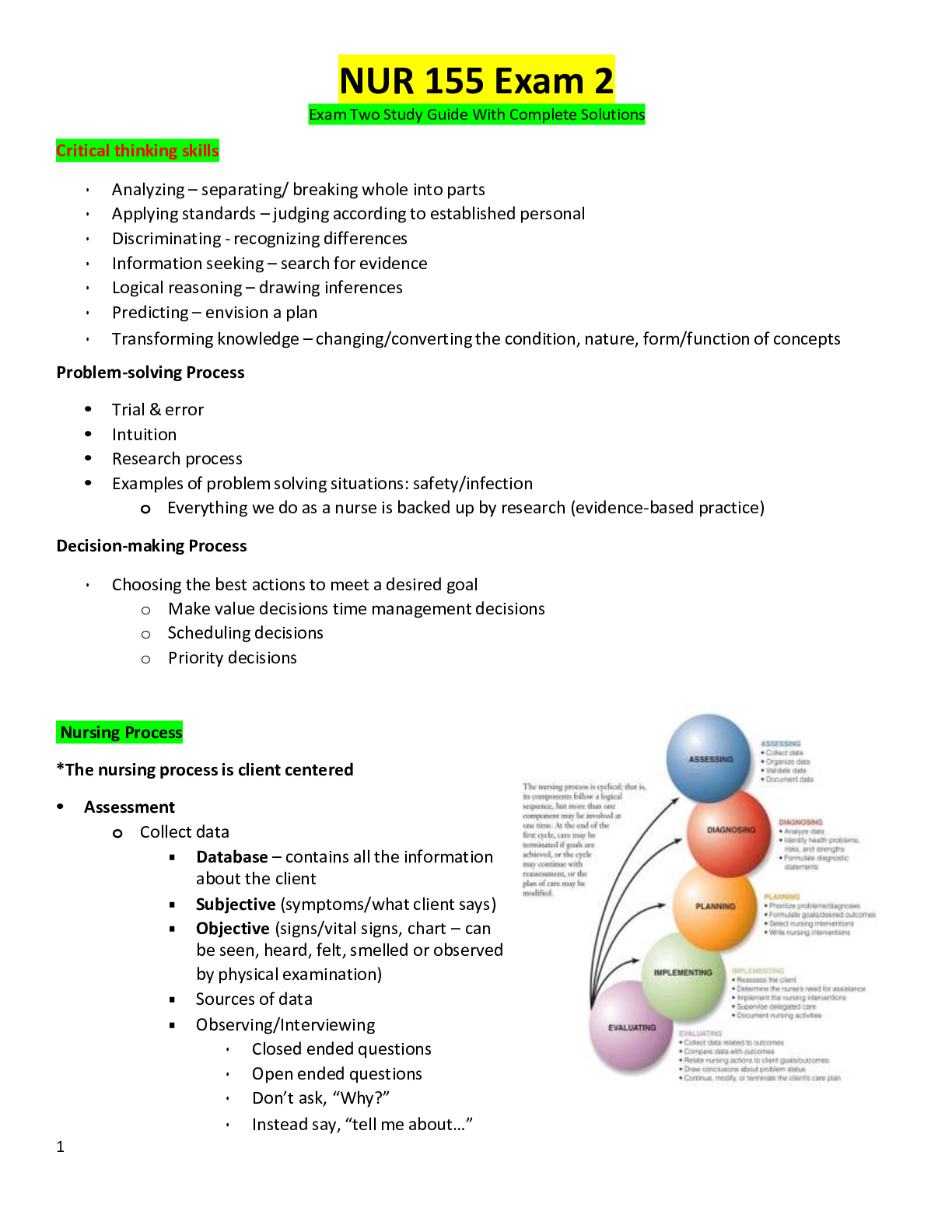
.png)
.png)


